
Pushing Further and Never Settling for Less: The Art and Discipline of Mr. Tom Parker
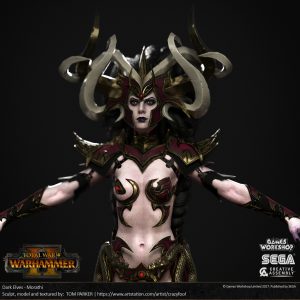 Mr. Tom Parker says it best in this interview:
Mr. Tom Parker says it best in this interview:
I’m always thinking whilst I’m playing this Multiplayer game or sports game or watching this boring sitcom, there’s someone out there in front of a computer or in their sketchbook bettering themselves.
Definitely, mediocrity is not an option for Mr. Parker. His experience is a (continuous) journey towards self-improvement and self-actualization as an artist. And this is seen through his amazing concepts online.
One realization that can be taken away from this interview is that Mr. Parker constantly pushes himself not only for the betterment of his talent, but for the bigger picture. But does that mean, he is all work and no play? No. far from it. What he does is something that he really loves—something that he is impassioned about—and that, makes him the better, if not the best version of himself.
Let’s get to know Mr. Parker through this interview as he shares how he was immersed with his craft and how he, through the mastery of Zbrush, became a better artist.
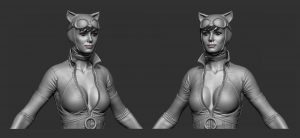 Xeno Creatives (XC): ZBrush brought a lot to the industry. What was it like using the software for the first time? What processes did you have to learn to be skilled in it?
Xeno Creatives (XC): ZBrush brought a lot to the industry. What was it like using the software for the first time? What processes did you have to learn to be skilled in it?
Tom Parker (TP): I remember starting many many moons ago on ZBrush 2 with a mouse and a hand-me-down computer. Safe to say my first sculpt was absolutely horrid. I had no idea what I was doing and the UI was very daunting, but I remember being super-impressed by it. I came out super-inspired and couldn’t wait to try something new and just start creating.
To get myself comfortable with ZBrush I just kept testing my limits and pushing the boundaries of what I could do. Trying newer, bigger projects and mainly just having fun with it. There was a really thriving online community back then, so it was great sharing and learning from each other in those early days. But biting-off more than you can chew forces you out of your comfort zone and to level-up very quickly. It is a practice I try to encompass in my work to this day, trying to make each character better than the last and to learn new processes or techniques with each project I complete.
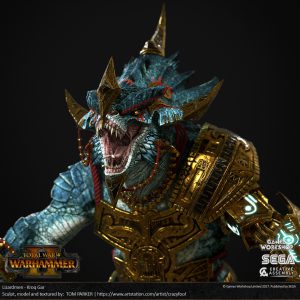 XC: How does ZBrush help you progress further in your craft?
XC: How does ZBrush help you progress further in your craft?
TP: ZBrush has allowed me the tools to empty my head of all the crazy ideas I have stored in there. It allows me a blank canvas to express myself and a true freedom to create. I’ve not had that feeling with any other software.
Pixologic have been amazing at keeping the software up-to-date as well with current industry needs and making my everyday life that much easier. Without simple functions such as Decimation Master, DynaMesh, New Booleans, we would all be in a lot of trouble and probably all a bit balder from all the hair we ripped out.
XC: When did you know that you’ll be using ZBrush to create 3D art? Would you want to expand to other media or do you want to just focus on it? What were there other media that you explored?
TP: My older brother introduced me to ZBrush while he was starting out in the industry and I instantly felt at home with it. Especially once I finally got a Wacom for it. That seemed to be my ‘aha’ moment and I knew I would love to do this for a job.
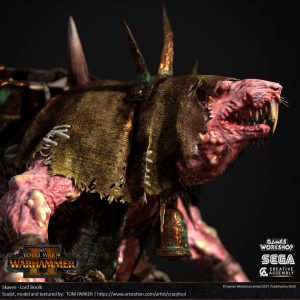 Before that though I wanted to be an illustrator or comic book artist. ZBrush totally ruined that for me though as I just found it a lot easier than drawing. It just seemed like a natural progression at the time, but having a 2D background definitely has its advantage and I do hope to one day return to it.
Before that though I wanted to be an illustrator or comic book artist. ZBrush totally ruined that for me though as I just found it a lot easier than drawing. It just seemed like a natural progression at the time, but having a 2D background definitely has its advantage and I do hope to one day return to it.
The advancements in 3D printers have me really excited though I would love to shift one day into collectibles properly. Something about seeing your work physically in front of you and the joy it gives to others is truly amazing.
XC: How is knowledge in human anatomy important when working with ZBrush?
TP: Its pretty important for character art. However, it all depends on what you want to create. If you are creating stylised characters then it is good to have basic knowledge. But as we go further towards realism, the more of a role it will have and the more believable your work can become.
Understanding underlying bone structures and muscle mass and fat deposits can help give your work a real sense of weight and believability.
Even if you have to design mechs or robots it can come in handy as you push away from just making something cool but making sure it has function too.

It’s a very difficult subject to learn and it seems never-ending as you peel away the next layer of knowledge only to find new constructs that completely destroy everything you have already learnt. The best advice is to use real life reference best you can and try not to rely heavily on artistic interpretation.
XC: Do you see yourself working in the movie and television industry?
TP: I would love to one day but I quite like game art as you do get to take the model from start to finish and do not have to worry so much about shaders and renderers. I am working more and more towards realism these days so maybe one day I will try.
XC: Was delving into the craft really a passion to begin with or a mere necessity?
TP: A mixture of both I think. After my university course in illustration and graphic design I didn’t really know what career to pursue. Then my brother got a job as a vehicle artist at a video game company and it dawned on me that I should be trying to get into games in some form.
I’ve always loved video games and have always been fascinated and intrigued in how they are made; I was instantly grabbed by the idea of making it into a career.
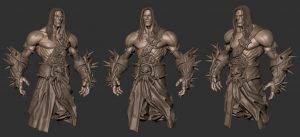 I spent most nights and weekends making characters and got a lot of satisfaction from it. But I had a drive in me to do it professionally and I had everyone telling me not to. Lecturers thought there was no money or that the art had no significance (how wrong they were) and old colleagues that thought it a pipe dream and one that could never be achieved.
I spent most nights and weekends making characters and got a lot of satisfaction from it. But I had a drive in me to do it professionally and I had everyone telling me not to. Lecturers thought there was no money or that the art had no significance (how wrong they were) and old colleagues that thought it a pipe dream and one that could never be achieved.
So I would say I’ve always had a passion for art and an inner drive that turned it into a necessity. I ‘needed’ to get into games no matter what!
XC: Your works over at ArtStation are AWESOME. Your concepts for Total War: Warhammer are really promising. Do you have any favorite pieces? What are they and why?
TP: “Total War: Warhammer” has been an amazing project to be a part of. The whole team has been amazing to work with. The lore, the array and variety of characters we get to work on has been astounding.
I always try to make my next character outdo the last so it is hard to pinpoint favourites. I did really enjoy the dark elves though, their armour is so complicated and difficult to model that it’s a real test to make it work and fit the concept.
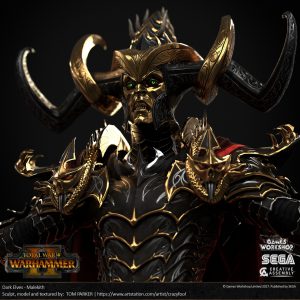 I really enjoyed making Malekith. He was the first dark elf we made so I knew I had to go all out, luckily I had an amazing concept to work from by Beth Hobbs but the leads wanted me to change the helmet and make him a bit more menacing. So I found some illustrations of him that games workshop had commissioned and worked it in best I could with a few extra shapes that I wanted to use. He looked a bit plain too so I started adding tertiary details all over the armour. It seemed maybe a bit excessive for what is a small strategy game but it seems to have really resonated with the fans as they love the designs. And seeing what PLATIGE images did with him and teclis that I worked onthe zbrush sculpt for the cinematic trailer was amazing.
I really enjoyed making Malekith. He was the first dark elf we made so I knew I had to go all out, luckily I had an amazing concept to work from by Beth Hobbs but the leads wanted me to change the helmet and make him a bit more menacing. So I found some illustrations of him that games workshop had commissioned and worked it in best I could with a few extra shapes that I wanted to use. He looked a bit plain too so I started adding tertiary details all over the armour. It seemed maybe a bit excessive for what is a small strategy game but it seems to have really resonated with the fans as they love the designs. And seeing what PLATIGE images did with him and teclis that I worked onthe zbrush sculpt for the cinematic trailer was amazing.
My favourite models are yet to come unfortunately and so can’t talk about them yet, but at the moment Morathi is probably my favourite as her face came out really nice and I think I made her look strong and not just another sexy bikini female character that we see these days with no substance. I was also learning likenesses at the time so was very happy how she came out, if you’ve seen the latest mission impossible you might recognise her ….or maybe not.
XC: What other pieces do you want to create?
TP: In my spare time I’ve been trying to understand and conquer likenesses. It’s proved extremely difficult and I’m hoping to start sharing some soon but I’ve got a big long list of celebrities I would love to work on. I just find it fascinating how different the human face can be and how all the underlying structures are almost like a puzzle. It’s truly one of the hardest things I’ve tried to learn and I look forward to finally showing them off soon.
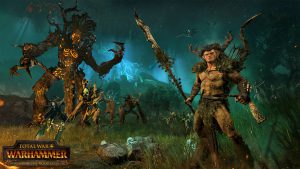 Other than that though I’m really wanting to get into collectibles. They present a new challenge that I can’t wait to try. I’ve helped a few friends pose their models and it’s super-refreshing breaking away from a relaxed T pose that most artists are restricted to.
Other than that though I’m really wanting to get into collectibles. They present a new challenge that I can’t wait to try. I’ve helped a few friends pose their models and it’s super-refreshing breaking away from a relaxed T pose that most artists are restricted to.
XC: Whom do you consider your influences? What attracted you to them?
TP: Very long answer
I have a lot of influences in my work, but it’s people at the top of their game that inspire me to do better. Especially the new string of likeness sculptors.
Rafael Grassetti had inspired me every step of my career. His sense of design and energy and grit have always instilled a great weight to his work, and I love that the new “God of War” has his touch all over it. Another artist I admire greatly is Frank Tzeng, his latest work on the “Uncharted” series and his personal work shows just what is achievable—and I love his workflow videos. And my good friend Adam Fisher has been killing it recently with his Prime1 work.
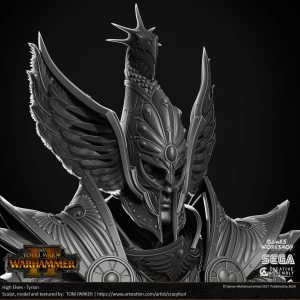 At the moment the top guys I draw from though are Hossein Diba and Vimal Kerketta. Their likeness work is second to none. I realized that only by trying to replicate their achievements have I recognised how difficult a feat they have achieved. You can probably count good likeness sculptors only on one hand once you start delving into the essence of what makes good likeness. I hope one day I can make work that is at par with the quality that they do.
At the moment the top guys I draw from though are Hossein Diba and Vimal Kerketta. Their likeness work is second to none. I realized that only by trying to replicate their achievements have I recognised how difficult a feat they have achieved. You can probably count good likeness sculptors only on one hand once you start delving into the essence of what makes good likeness. I hope one day I can make work that is at par with the quality that they do.
My biggest inspiration though is Scott Eaton. I met him last year when he did a workshop with creative assembly on facial anatomy. I was blown away by his knowledge and was taking down notes like a madman. it took my studying to new levels after the short 3-day course. But it wasn’t just that he was an anatomy wizard, but an entrepreneur and a super nice guy. He would write down random sayings or ideas throughout the day and had all these incredible stories about his life. He was just way too awesome to comprehend and I think anyone that has met him will agree with me.
He inspired me so much that I left studio life a month or two later and went back to freelance; I took my own career where I wanted to take it. He inspired me to lose weight and get back into shape (currently 3 stone lighter than I was 6 months ago) and to take my work seriously and push myself more than ever before.
XC: Do you also see yourself in Game Character Design?
TP: I’m very lucky that throughout my career companies have trusted me in conceptualizing many characters for them. I’m quite capable in 2D and I’m very fast at blocking out characters in ZBrush, so a lot of companies take advantage of it. If they aren’t sure on a particular element or the concept team are fully-booked, I can jump in and lend a helping hand. It would be great to do it more often though and really push myself. I’ve been told that I have a good ‘eye’ for design throughout my career, which is great to hear as I can rest easy in the knowledge that they trust you not to ruin their multi-million dollar projects..
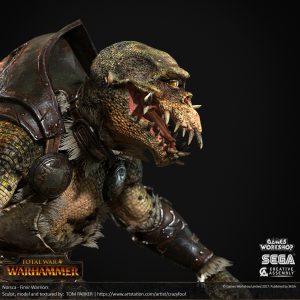 XC: If you weren’t a 3D artist today, what do you think you’d be specializing in?
XC: If you weren’t a 3D artist today, what do you think you’d be specializing in?
TP: I would love to be a concept artist one day. Ever since I could hold a pencil I was drawing and I do enjoy picking it back up now and then. But I need to level up a lot more before I could do it professionally.
There’s such a beauty to drawing and I’m constantly scrolling through Instagram crying at how good everyone is.
XC: What advice or message can you give young aspirants wanting to enter the craft/industry?
TP: I think the main piece of advice I can give is to just work hard and remember to have fun with it.
I’m always thinking in my head ‘how do I use my time effectively?’ Do I sit on the sofa and watch TV or play games or go out drinking with friends, or do I make art or try to learn something or read a book or go get some exercise. I like to use my time wisely and now that I have a daughter, the time for being lazy is gone. So do make a schedule and allow yourself some play time so as not to burn out. But I’m always thinking whilst I’m playing this Multiplayer game or sports game or watching this boring sitcom, there’s someone out there in front of a computer or in their sketchbook bettering themselves.
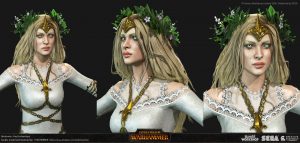 Make sure your projects are fun as well or you will get bored and burnt out. With personal work motivation is going to be one of your biggest hurdles, so make it a project you will enjoy and put that extra bit of love to it.
Make sure your projects are fun as well or you will get bored and burnt out. With personal work motivation is going to be one of your biggest hurdles, so make it a project you will enjoy and put that extra bit of love to it.
Make sure you are not just sculpting in zbrush aswell. Get some game ready assets in there using current industry tech and software. Zbrush can be very misleading due to its perspective and so often people that stay in ZBrush develop bad habits without even realising. You will also find many companies will not look favourably on a zbrush only portfolio as zbrush is only a very small piece of mist pipelines.
Best advice though is to look after yourself and eat healthily. It can really help you understand anatomy and it feels good to get your blood pumping. It will help you build confidence too which most artist suffer a lack of. Feeling good about yourself though will instantly give you a boost to your artistic output too and avoid burnouts.
Truly inspiring with a portfolio to boot, Mr. Parker is an artist whom we would all like to become. From all of us here at Xeno Creatives, we wish Mr. Tom Parker all the success in his work.
Get to see more of his AWESOME works by cliking here!

